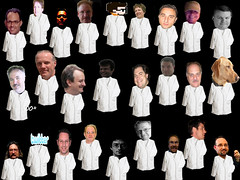
Science Advocates will be ambassadors for open innovation and efficiency in science
Last year, my research into the mechanisms of breast cancer development hit a roadblock. As a postdoctoral candidate at the University of Miami, I needed to conduct immunology experiments outside my expertise, but had difficulty finding potential collaborators or providers to work with. There was simply no efficient way to access specialist services, compare pricing across laboratories, or exchange payment across institutions.
Such inefficiencies were by no means unique to me, but represented an emerging impediment to the progress of scientific research. I realized that we now live in an increasingly specialized world, where no scientist can be an expert in all fields. There was no medium to fill gaps in expertise, few mechanisms to transfer expert information, and even fewer platforms sufficient for exchanging services. Whether its basic research or translational work, it was now clear to me that research institutions have become closed ecosystems, with siloed laboratories and opaque mediums of exchange. The current system of scientific collaboration, as it stood, needed to be changed.
Thankfully, I’ve had the honor of interacting with several ventures and initiatives to lead a movement in changing this dynamic.
Startups in Silicon Valley are providing the infrastructural change needed to improve scientific collaboration. Ventures like Academia.edu have established social platforms for researchers to connect and exchange academic papers online. Organizations like Breakout Labs are providing early-stage non-dilutive funding for radical scientific ideas. And Science Exchange, a startup I co-founded last year, is helping researchers collaborate across institutions, and exchange services over a transparent marketplace.
Such organizations lay the groundwork to accelerate scientific research. They create a dynamic that helps fill gaps in expertise, and efficiently exchange services as needed. Sustainable change and adoption of such platforms however, must now emerge from the bottom-up: from the students, postdocs, and professors themselves.








